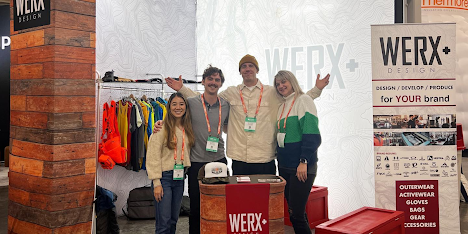Technical Outerwear Design in the USA: A Guide to Modern Apparel Creation
As the competition in the outdoor apparel design industry becomes stiff, the necessity for new and functionality-oriented products becomes inevitable. Brands are no longer only producing clothing items; they’re creating moments. Consumers demand more from their apparel: durability, sustainability, and aesthetic appeal.
With this demand growing all the time, there is also a correspondingly growing requirement for excellent design firms that can integrate technology into the creative process. This is where an apparel design firm comes in handy, taking ideas and translating them into effective products in a highly competitive market.
Shaping the Future of Outdoor Apparel Design
The industry in question has evolved quite a lot. The distinction between fashion and utility has become more and more insignificant, creating a trend where outdoor apparel seamlessly transitions into urban settings. An example of this change is the “gorp-core” trend that characterizes every item of clothing through its utility value. Not only trails but products such as rugged jackets and technical pants are today’s streetwear essentials.
Overall, such evolution is beneficial for brands in a way that is almost limitless. When outerwear fashion brands engage specialized apparel design firm, they can create functional wear that caters to active lifestyles without compromising on aesthetics. Regardless of whether you are a small company that has only recently entered the market or a large brand, taking expert guidance transforms your ideas into impactful products. From initial concepts to final execution, everything must be correct for any project to succeed.
Why Choose a Specialized Apparel Design Firm?
Expertise in Technical Outerwear Design in the USA
Technical designers create accurately detailed drawings using computer-aided design, or C.A.D, which acts as maps for the garment. Whether it’s a waterproof jacket for mountain climbing or a light jacket for desert travel, they ensure performance meets expectations.
Innovative Product Development
In a complex and systematic process, including research and innovative architectural/design approaches, firms create disruptive products. They work with new types of fabric, reinforce the strength, and integrate the policies of sustainability.
Hands-On Collaboration
A professional design firm does not exist independently of other organizations. They are working with your brand, and they act as part of your team. This keeps the vision real, from the sketches to the finished products.
Sustainability and Outdoor Apparel
The outdoor industry is the most advanced in environmental responsibility initiatives due to the increasing customer demand. Sustainable methods of production are preferred even by brands among Millennial and Generation Z consumers.
Material Innovation: Using recycled and biodegradable fabrics in order to minimize the amount of harm done to the environment.
Durable Designs: Designing clothing products that will have a longer life span, thus reducing the need for frequent replacements.
Ethical Manufacturing: Promoting the policy of equal opportunities at the workplace and environmentally friendly measures in production.
Practicality Meets Style in Outdoor Design
Modern outdoor enthusiasts require gear that works well in challenging environments while looking stylish. While these designs are functional, they allow users to engage in the outdoors freely without sacrificing individuality. This dual requirement calls for features like:
Waterproofing and breathability for comfort in all weather.
Smart storage solutions, such as hidden pockets and modular compartments.
The Role of Youth in Shaping Trends
Young consumers are reshaping the outdoor apparel industry. Customization and personalization are key trends among Gen Z, who value unique and meaningful designs. For instance, many prefer jackets with custom color palettes or backpacks with embroidered names.
Design firms incorporate these preferences and give brands a chance to reach out to young consumers. Thus, they present products that will interest the next generations of people who are fond of outdoor activities.
From Concept to Creation: The Process
Designing outdoor apparel is a multi-step journey. Every stage is vital for providing goods that would meet the current customers’ needs. Sustainability in this context translates into a consistent brand identity, along with the ability to deliver across a range of products beyond the actual user expectations.
Research and Ideation: Designers learn about markets, consumers, and new materials and processes.
Sketching and Prototyping: These concepts are developed into models for fit testing, operation, and aesthetics.
Refinement: Feedback-driven adjustments are made to ensure the final product is flawless. Once finalized, the sourcing phase begins, where materials, trims, and labels are procured.
Production Oversight: Designers work closely with manufacturers to maintain quality and precision.
Conclusion
Creating high-performance and stylish outdoor apparel is no small task. It requires expertise, innovation, and a hands-on approach. WERX Design specializes in technical outerwear design in the USA, helping brands elevate their offerings. By aligning with sustainability trends, your brand not only benefits the planet but also earns customer loyalty.




Comments
Post a Comment